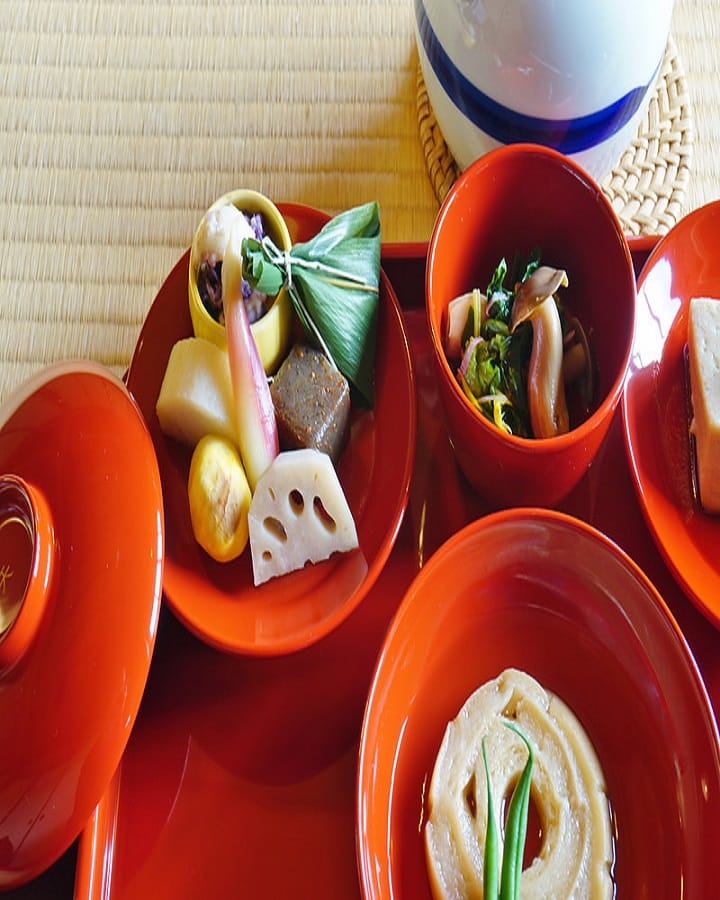
Image Credit – Hema
Food is more than just nourishment—it reflects culture, philosophy, and a way of life. One of the most profound examples of this is vegan and vegetarian Shojin Ryori, the traditional cuisine of Buddhist monks in Japan. Rooted in Zen philosophy, this style of cooking avoids animal products entirely and embraces seasonal vegetables, tofu, seaweed, and legumes. Today, Shojin Ryori has captured the interest of not only spiritual practitioners but also health-conscious individuals and food lovers seeking balance, mindfulness, and sustainability.
In this article, we will explore the history, philosophy, ingredients, and modern-day relevance of vegan and vegetarian Shojin Ryori.
What is Shojin Ryori?
Shojin Ryori literally translates to “devotion cuisine” or “food of ascetic practice.” It originated in Japanese Buddhist temples more than 700 years ago, inspired by the principle of ahimsa, or non-violence, which is central to Buddhism. This means that no meat, fish, or animal-derived products are used. Instead, the cuisine celebrates plants and natural flavors in their purest form.
Unlike modern plant-based diets, vegan and vegetarian Shojin Ryori is not just about health—it is deeply tied to spirituality. Every ingredient is respected, nothing is wasted, and the preparation process itself is a form of meditation.
Core Principles of Vegan and Vegetarian Shojin Ryori
- Plant-Based Purity – Shojin Ryori strictly avoids animal products, making it fully vegan-friendly.
- Seasonal Balance – Ingredients change with the seasons to maintain harmony with nature.
- Simplicity and Respect – Dishes highlight natural flavors without heavy spices or strong seasonings.
- Mindful Eating – Meals are consumed slowly and gratefully, reflecting gratitude toward nature.
These principles make vegan and vegetarian Shojin Ryori a philosophy of life, not just a diet.
Vegan and Vegetarian Shojin Ryori

Ingredients (for 2 servings)
Rice & Soup
- 1 cup Japanese short-grain rice
- 3 cups water
- 1 piece kombu (dried kelp, 5 cm)
- 2 tbsp miso paste
- 1 cup silken tofu (cubed)
- 1 green onion, finely chopped
Side Dish (Simmered Vegetables – Nimono)
- 1 carrot, cut into rounds
- ½ daikon radish, cut into chunks
- 4 shiitake mushrooms
- ½ block firm tofu, cut into cubes
- 2 tbsp soy sauce
- 1 tbsp mirin
- 1 tsp sesame oil
Pickles (Tsukemono – Quick Pickle)
- ½ cucumber, thinly sliced
- ½ tsp salt
- ½ tsp rice vinegar
Instructions
Step 1 – Cook the Rice
- Wash the rice thoroughly until the water runs clear.
- Add 1 cup rice and 2 cups water to a pot or rice cooker.
- Cook until soft and fluffy.
Step 2 – Make the Miso Soup
- Soak kombu in 1 cup water for 20 minutes, then bring to a gentle simmer.
- Remove kombu, add tofu cubes, and simmer lightly.
- Dissolve miso paste in a little hot broth, then stir back into the soup.
- Top with chopped green onion before serving.
Step 3 – Prepare Simmered Vegetables (Nimono)
- Heat sesame oil in a pot and lightly sauté carrot, daikon, and shiitake mushrooms.
- Add 1 cup water, soy sauce, and mirin.
- Simmer on low heat until vegetables are tender.
- Add firm tofu cubes and cook for 2–3 minutes.
Step 4 – Quick Pickles (Tsukemono)
- Place cucumber slices in a bowl, sprinkle with salt, and mix well.
- Let sit for 10 minutes, then drain excess water.
- Toss with a dash of rice vinegar before serving.
Health Benefits of Vegan and Vegetarian Shojin Ryori
The popularity of vegan and vegetarian Shojin Ryori has grown globally because it aligns perfectly with modern health trends. Benefits include:
- Heart Health: No animal fats, cholesterol, or heavy oils.
- Digestive Wellness: High fiber from vegetables and grains.
- Weight Management: Low in calories yet nutrient-dense.
- Sustainable Living: Plant-based eating supports environmental balance.
- Mental Peace: Mindful preparation and eating reduce stress and encourage calmness.
Shojin Ryori in Modern Times
Today, vegan and vegetarian Shojin Ryori is not limited to Buddhist temples. Many Japanese restaurants, especially around Kyoto and other cultural centers, offer Shojin Ryori meals for visitors. It has also become popular among vegans and vegetarians worldwide who are looking for healthier and more spiritual approaches to food.
Even in Western countries, chefs have adapted Shojin Ryori principles to create plant-based menus that respect seasonal produce and simplicity. This makes Shojin Ryori not only a historical tradition but also a modern culinary trend.
The philosophy of vegan and vegetarian Shojin Ryori teaches us that food is more than sustenance—it is a path to harmony with ourselves, others, and nature. By embracing seasonal ingredients, mindful preparation, and plant-based purity, this cuisine has stood the test of time for centuries. For those exploring healthier diets or seeking deeper spiritual connections through food, Shojin Ryori offers a beautiful balance of nourishment and mindfulness. Would you try a Shojin Ryori meal? Let us know in the comments below!
Frequently Asked Questions
What is a traditional Shojin Ryori recipe?
A traditional Shojin Ryori recipe is a plant-based Japanese Buddhist temple meal that usually includes steamed rice, miso soup, seasonal vegetables, tofu, seaweed, and simple pickles. The recipe avoids meat, fish, and animal products, focusing instead on natural flavors, balance, and mindfulness.
Is the Shojin Ryori recipe vegan and vegetarian?
Yes, the Shojin Ryori recipe is naturally both vegan and vegetarian. It is based on the Buddhist philosophy of non-violence (ahimsa), which means no animal products are used. Instead, the meals are prepared with tofu, seaweed, mushrooms, root vegetables, and grains.
Can I make a Shojin Ryori recipe at home?
Absolutely! You can easily prepare a Shojin Ryori recipe at home by cooking steamed rice, miso soup with tofu, simmered seasonal vegetables, and quick pickles. While traditional temple meals may include multiple side dishes, even a simple version brings the spirit of Shojin Ryori to your kitchen.



